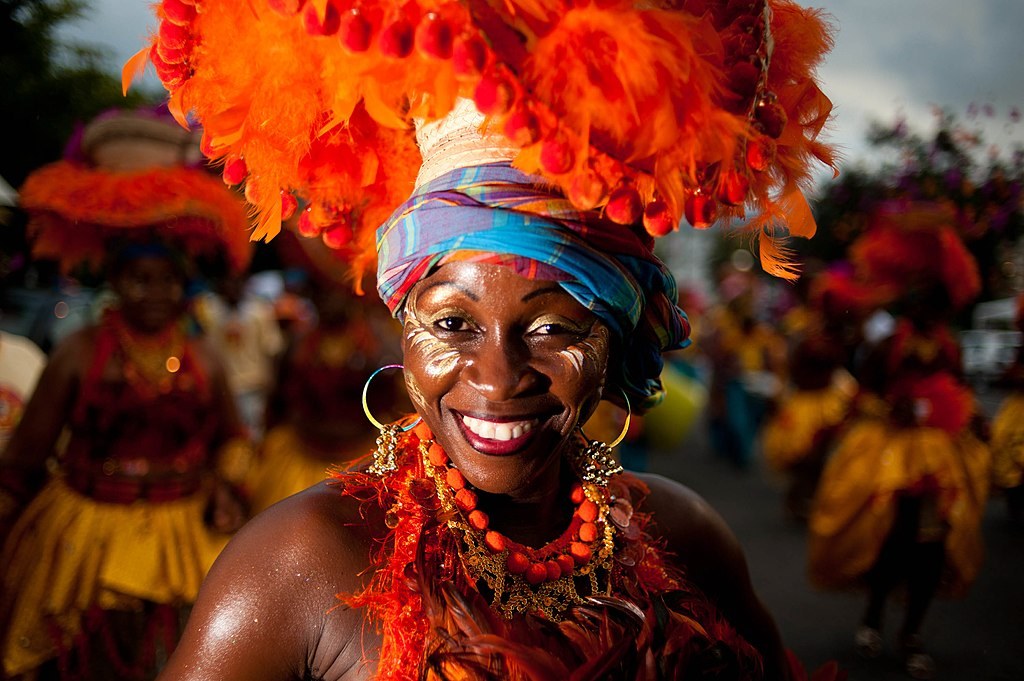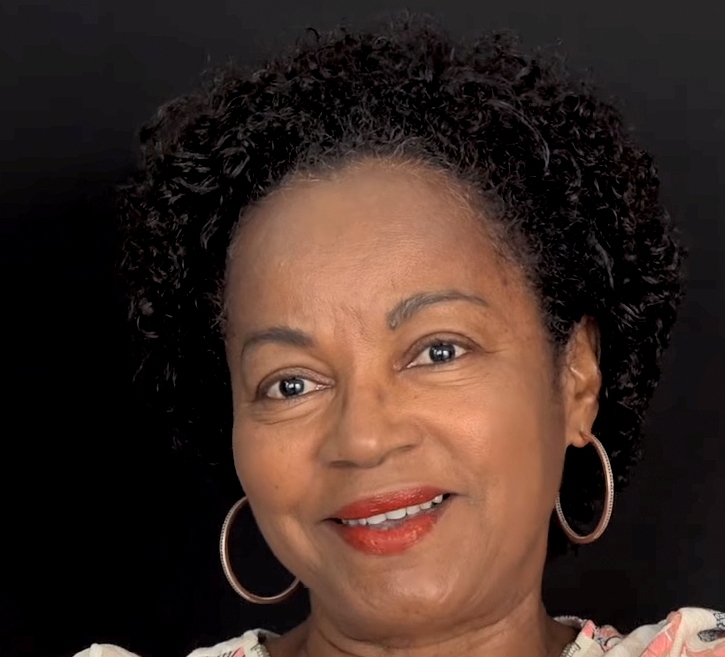What's a "Carnival Life"?
Posted on September 06, 2021

Four days when they'd show the world that even though life had left them by the wayside, they hadn't been beaten yet . . .
On Labor Day, New York City traditionally hosts a gigantic, Caribbean-themed parade; this year, as in so many other cities, this parade was canceled due to the Covid-19 pandemic. So, we thought we'd share a story that gives a sense of what it's like to be in the middle of such a celebration: "Carnival Life," from Guadeloupean author Gisèle Pineau and translator C. Dickson. The story's themes of renewal, resilience and resistance—also inherent in Caribbean Carnival traditions—seemed especially fitting for the beginning of this more-than-usually challenging school year.
In "Carnival Life," joining a neighborhood "dance-band" and taking part in a Carnival parade gives a tired single mother a new lease on life. We first meet Gilda, a former beauty pageant winner, as she recalls the three men who passed through her life, each one giving her children but no lasting happiness. Perhaps most hurtfully of all, her last lover leaves her as soon as he discovers she is pregnant, strewing racist slurs* and cutting comments in his wake:
"Some black woman who'd already learned about life . . . A sinner . . . A woman who'd made a carnival of her life . . ."
In the story's final passage, Gilda parades past this man and her other former lovers with her dance-band. She has found pride and community in this, her "Carnival life."
First published in English in 2006, the story feels as timelessly "young and fresh" as its heroine eventually does. We can think of no better way to launch WWB Campus's new collection of Caribbean literature and resources—a multi-year affair, beginning here on the blog—than with "Carnival Life."
Putting "Carnival Life" in Context

These contextual resources help readers get to know the creators and culture behind the story:
- Find out what helped Pineau survive growing up in "a Parisian suburb thriving with racism and xenophobia," in her interview with the French Consulate in Miami.
- Learn all about Carnival from a blogger who grew up in Guadeloupe and is now living in Michigan.
- Virtually visit Guadeloupe (an overseas region of France) with a story-specific Google Map.
Teaching Ideas
Have students work in small groups to trace the changes in Gilda's feelings about herself, marking and analyzing relevant lines such as:
- The women dancers were beautiful, even the old ones, the fat ones.
- Evenings, on their way back to Busson, they were proud, like soldiers who'd come to liberate a city.
Discussion questions might include:
- How does Gilda move from feeling ashamed of herself to feeling proud?
- What is a "carnival life"? How does Gilda reclaim this term as a positive one? (Advanced students might also make connections to other formerly pejorative terms people have reclaimed in recent years, such as "queer.")
As a culminating assignment, students might write short stories in which characters discover new hope or pride in themselves.
Pairs Well with . . .
Other stories you might teach alongside "Carnival Life" include:
- "Cavities and Kindness," a Japanese story about a trans woman's recovery from heartbreak, also available on this site. By Nao-Cola Yamazaki, translated by Kalau Almony.
- Parable of the Sower, a literary science-fiction novel about a new community, led by a young African-American woman, that forms after an apocalypse. By Octavia Butler.
* Several characters in the story use racially charged language to describe themselves or others, something which educators, especially those working at the secondary school level, might consider explicitly discussing with students.



